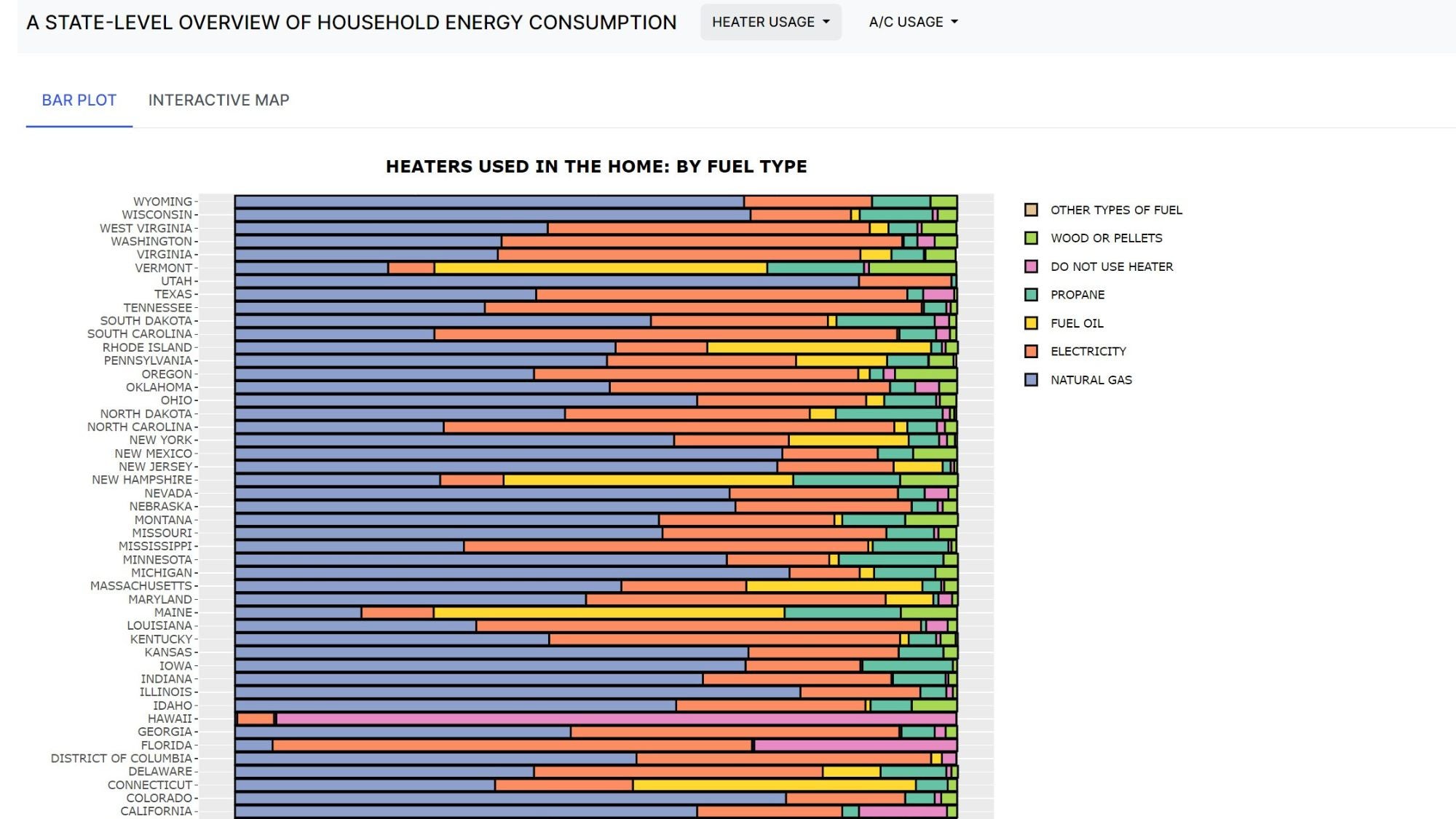A deep dive into U.S. residential energy usage: Challenges and opportunities for clean energy transition and equitable access to energy
To offer users a detailed but intuitive understanding of the U.S. energy landscape, EIDC has developed an interactive dashboard that taps into the latest residential energy consumption survey (RECS) – the only source of nationwide data on household energy usage.
Administered by the U.S. Energy Information Administration, the statistical arm of the Department of Energy, the 2020 release of the RECS has allowed for state-level estimates, which has been the most granular level of analysis to date.
The dashboard features a map and bar chart that highlights state-level differences in
- HVAC (Heating, Ventilation, and Air Conditioning) usage;
- Household energy insecurity (i.e., the inability of a household to meet basic heating, cooling, and other essential energy needs due to financial constraints or high energy costs); and
- Residential energy use intensity (i.e., a building’s energy usage, in relation to its size).
Its interactive features include filters and hover-over pop-ups that allow users to identify
- The most frequently used types of HVAC equipment and sources of energy used in the U.S;
- The distribution of households that struggle to afford energy bills or energy-related maintenance costs; along with
- States with the highest/lowest energy efficiency, with respect to residential buildings.

Figure 1. A map showing the usage of electricity for heating
A closer analysis of the data highlights the fragmented energy landscape divided by geography and climate and Americans’ reliance on non-renewable energy (Figure 1). It also underscores the lack of household access to reliable and affordable energy that is reflective of America’s socioeconomic divide (Figure 2).

Figure 2. A map showing the extent of energy insecurity across the U.S.
For users interested in exploring the
- Insights gleaned from the 2020 Residential Energy Consumption Survey, please check out EIDC’s summary report; or
- Executed codes for R Shiny, take a look at our instructions on building a Shiny web application or download the full R script from EIDC.
About the EIDC: The Environmental Impact Data Collaborative (EIDC) enables researchers, community groups, and policymakers to explore and visualize data in ways that make environmental policy more effective and equitable. Our platform allows users to access, merge, transform, analyze, and interpret hundreds of datasets with billions of rows of information, in the most seamless way possible.

